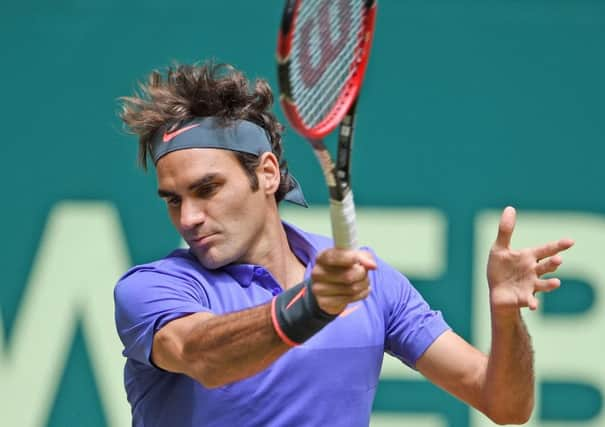Allan Massie: Cream rises to the top at Wimbledon


Otherwise it has been almost always one of the top four seeds who wins: Becker, Edberg, Sampras, Agassi, Hewitt, Federer, Nadal, Murray, Djokovic. More often than not, two of these players have contested the final. One might add that in the nine years before Becker’s first title, the only winners were Bjorn Borg, John McEnroe and Jimmy Connors.
In contrast the Open golf championship is, well, considerably more open. Even Tiger Woods hasn’t dominated it as Sampras and Federer have dominated Wimbledon – though back in the 1970s Tom Watson came close to doing so. This is partly because chance plays a much bigger part in golf than in tennis, and does so especially on links courses. In tennis you play your opponent; in medal-play golf you play the course first of all. Then the difference between winning and losing in golf may be tiny, a single missed putt for instance. And of course far fewer strokes are played in a round of golf than in a tennis match, which makes each stroke all the more important. In half-a-dozen rallies Andy Murray and Novak Djokovic may each play more strokes than Rory McIlroy will in 18 holes.
Advertisement
Hide AdAdvertisement
Hide AdThe cream, as Jim Telfer used to like to say, rises to the top; and it does so more surely in tennis. To win Wimbledon you must win seven best-of-five-sets matches, a formidable mental as well as physical challenge, and one which it is rare for any but the finest players to be able to meet successfully. This is why it is usually a waste of your money to back an outsider.
I don’t know who devised the scoring system in tennis, but the man was very smart indeed. It has worked for well over 100 years, with only one revision: the introduction of the tie-break. The beauty of the scoring system is that no match is ever surely won or lost till the last stroke is played. However far behind you are there may still be hope. This is different from most ball games. You can be down two sets, 0-5 and love-40, and still win, no matter how improbable this may seem.
The length of the match is important. Playing over five sets rather than three favours the better player. This is also the case, of course, with match-play golf. When the individual matches in the Walker and Ryder Cups were played over 36 holes, the Americans almost always won. When a change was made to 18-hole matches, the British and Irish (and then European) chances were improved.
Upsets may occur in the early rounds at Wimbledon, but, barring surprises, it is most likely, given Rafa Nadal’s lack of form, that one of the top three seeds – Djokovic, Federer. Murray – will be this year’s champion. There are others with a chance, notably Kei Nishikori, a beautiful and fast-improving player, who is in the top (Djokovic’s) half of the draw.
Djokovic must start as favourite. He is the defending champion and is also, week-in, week, out, whatever the surface, the best player in the world. His defeat in the French Open final will doubtless make him even more determined to retain his title. There are no weaknesses in his game, and he has beaten Andy Murray in their last eight encounters. History doesn’t necessarily count for much, and, in any case, Murray won their last two matches on grass, the Wimbledon final in 2013 and the Olympic semi-final the previous year.
The seeding has Murray meeting Federer in the semi-final. Over three sets Federer is still capable of beating anyone and that includes Djokovic and Murray. But he is now 33 and may struggle in a five-set match. However, since Stefan Edberg, one of the finest net-players of all time, became his coach, Federer has been coming to the net more often, seeking to shorten points and cut down on the number of exhausting long rallies. Interestingly Murray’s coaches, Amelie Mauresmo and Jonas Bjorkman, have been encouraging him to do likewise. A Federer-Murray semi would be fascinating, with each trying to outwit, rather than out-hit the other.
There are huge servers in the modern game: Milos Raonic, John Isner, Kevin Anderson; but even they don’t play the old serve-volley game consistently. The strain of playing such opponents is perhaps more mental than physical. You know they are going to get two or three “free” points in each of their service games, and that you may get at most one chance to break in a set. This puts even more pressure on your own serve, because you know if you are broken, a set is likely to slip away. Yet nobody expects one of these big servers to win Wimbledon because they lack the necessary all-round game.
So can Murray win his second Wimbledon and third Slam title? Of course he can. Will he? No “of course” about that. No “of course” about anything in top-level sport. But “the cream rises to the top”, and Murray is high-quality double cream, as creamy as anyone.